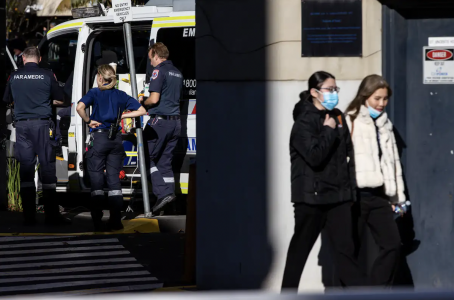SDC Rewards Member
Upgrade yours now
Ambulance Ramping Is A Signal The Health System Is Floundering. Solutions Need To Extend Beyond Eds
Health-care systems across Australia are buckling in the wake of COVID waves and the flu season. Pictures of ambulances piling up outside hospitals have become commonplace in the media. Known as “ramping”, it’s the canary in the coalmine of a health system.
As a major symptom of a health system under stress, state governments across Australia are investing unprecedented amounts into ambulance services, emergency departments (EDs) and hospitals. South Australia has committed to an increased recruitment of 350 new paramedics. Likewise, New South Wales has committed to 1,850 extra paramedics.
Victoria, meanwhile, has committed an additional A$162 millionfor system-wide solutions to counter paramedic wait times, on top of the A$12 billion already committed to the wider health system. This could begin to alleviate the system pressures that lead to ambulance ramping.
But what happens when the paramedics return yet again to ED with another patient? Will they simply end up ramped again?
We also need to consider better care in the community – and paramedics could play a role in this too.
Smoother transfers and discharges
The Victorian government initiative is based on a similar modelused in Leeds, in the United Kingdom, which has resulted in decreased ramping times. The Leeds model has seen only 4.9% of paramedic attendances to ED having ramping delays over 30 minutes, compared to the UK average of 21%.The model focuses on transferring the patient from the paramedic to the ED staff, discharging patients from hospital and coordinating the patient’s care in the community.
The aim is to improve patient flow in and out of the hospital. For patients requiring a hospital bed, they are admitted. For those not requiring admission, they are discharged home in a timely manner. Discharge coordinators will assist this process, coordinating the care patients need after an ED or hospital stay out in the community and in their homes.
The discharge process is complex. Often a well-done discharge is the difference between a patient returning to the community healthily versus a re-presentation to the hospital due to actual or perceived worsening of their condition.
However, patients often feel rushed when discharged from hospital and ill prepared to return home. Staff feel pressure to get patients discharged and out of beds to allow the next patient in.
The adoption of the Leeds model in Victoria aims to increase the flow in and out of the hospital. While this will get patients off ambulance stretchers, it may further exacerbate the feelings of being rushed.
Discharge and transitional care services, which aim to guide patients from their time in hospital to living back at home, tend to be disconnected and misunderstood by the wider health service. We must overcome these disconnections if the proposed model is going to have success.
Otherwise, new initiatives may decrease ramping at the ED, but this may come at a cost to the most vulnerable of patients in our community, if they feel they’re discharged too soon, are unable to cope and end up going back to hospital.
Paramedics can provide care in the community, too
Poor access to primary care services, such as being able to see a GP and a lack of community services, are problems across the globe. This has led to the use of paramedics in non-traditional roles in the UK, Canada, the United States, Finland and Ireland. Here, paramedics are used in emergency departments, in primary care practice and in outreach community services. Paramedics working in these non-traditional roles are collectively known as community paramedics.In Australia, paramedics are university educated and professionally registered, which maintains a high workforce standard. Paramedics can work independently within the community and are well situated to supplement or complement community services and primary care. Yet 80% of paramedics in Australia work solely in ambulance services.

Paramedics can work independently in the community but most in Australia work within ambulance services. Diego Fedele/AAP
State governments should consider new models of care, such as the introduction of community paramedics to support primary care services and other sectors across the health care system.
With further training, paramedics in Australia could be used beyond ambulance services. This could include working alongside other health professionals in emergency departments, supporting GPs and in hospital discharge teams. With a surplus of paramedic students graduating, there is a ready-made workforce ready to assist the wider health care system.
Community paramedicine programs overseas have resulted inimproved patient health outcomes and quality of life, and have been found to be economically beneficial.
A Canadian report found community paramedics saved the health-care system $29 million by keeping the 2,300 patients involved in the study healthy and avoiding hospital. Most importantly, patients had positive experiences of having their care delivered in their home.
However, not all patients wish to have their care delivered in their home or community. One report found 2.2% of patients refused to be treated by community paramedics.
Investment solely in the acute sector of our health system fails to recognise the inter-connectedness of all parts of the system. We must also invest in community services and primary care. Without system-wide investment, our health services will continue to fail.
This article was first published on The Conversation, and was written by Brendan Shannon Senior Lecturer in Paramedicine, Registered Paramedic from Monash University, Kelly-Ann Bowles Director of Research/Associate Professor - Paramedicine from Monash University






